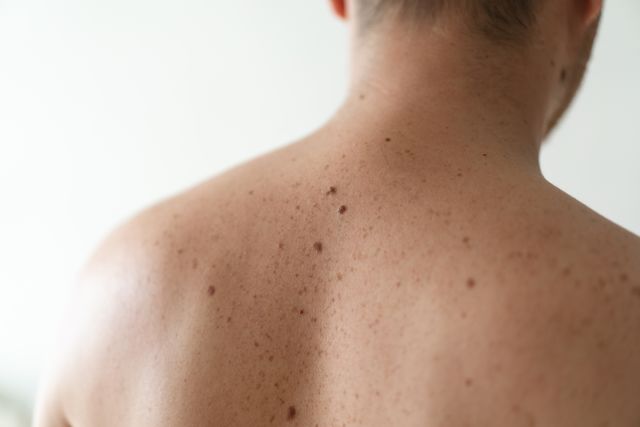Updated on April 10, 2024.
More people are diagnosed with skin cancer each year than all other cancers combined. Along with being so common, skin cancer is the most treatable cancer when it’s caught early.
If you have an irregular skin sore or mole, your healthcare provider (HCP) may recommend a skin biopsy for analysis. We talked with dermatologist Thomas Hocker, MD, of Advanced Dermatologic Surgery and Menorah Medical Center in Overland Park, Kansas, to learn more about skin biopsy procedures, so you know what to expect should you need one.
“Anytime we see a lesion [sore] that makes us concerned for the possibility of skin cancer, we recommend a biopsy,” says Dr. Hocker. “A biopsy is necessary in order to definitively diagnose something as being cancer or benign [not cancer].”
What happens during a skin biopsy
There are several types of skin biopsy procedures, including a shave biopsy, skin punch biopsy and incisional and excisional biopsies. During a shave biopsy, the area of the skin that is showing signs of possible skin cancer is numbed with medication, and then a thin, fine razor is used to remove the surface of the skin. The sample is examined under a microscope to confirm a diagnosis of skin cancer.
“For most patients, it’s kind of the same level of skin damage as if you scraped your knee on the pavement,” says Hocker.
A punch biopsy may be done when a deeper sample of skin is needed. During this procedure, your HCP numbs the affected area with medication and then uses a circular razor blade, like a little cookie cutter, to remove a deeper portion of skin for examination.
For larger spots that may have grown into deeper layers of the skin, the HCP may perform an incisional or excisional biopsy, in which a scalpel (cutting tool) is used to cut out part (incisional) or all (excisional) of the tumor, or mass of irregular cells. For suspected melanoma, HCPs prefer to perform excisional biopsies, when possible. Melanoma is a relatively uncommon type of skin cancer that grows and spreads quickly throughout the body, and accounts for most deaths caused by skin cancer.
Risks associated with a skin biopsy
As with any skin procedure, there are minor risks associated with a skin biopsy.
“Anytime you cut on the skin you will have some mark or some amount of scarring,” says Hocker. “For most people, it’s very minimal and the odds are high you won’t be able to see it after a few months.” You may also experience a little bit of bleeding immediately following the procedure.
To ensure proper skin biopsy healing, Hocker recommends gently washing the area with soapy water, applying petroleum jelly and keeping it covered.
Additionally, there is a small risk of skin infection. If you notice signs of an infection, such as excessive redness or swelling, pus from the area where the biopsy was done, or a fever contact your HCP right away. Antibiotics (medications that kill bacteria) can be prescribed to treat the infection.
Skin biopsy results
You should get your biopsy results back in less than a week. Sometimes, a repeat biopsy is needed. Hocker says this can happen if your HCP is concerned deeper layers of the skin may be affected by the cancer, or if the laboratory cannot make a definite diagnosis that a lesion is truly cancer. If the biopsy comes back as benign, no further treatment may be necessary. If it comes back as cancer, your HCP will review your treatment options.
Check your skin
Most skin cancer is almost 100 percent curable when treated early, says Hocker. That means it’s vitally important to protect your skin by wearing sunblock when you go outside, and checking your skin on a regular basis.
“We live in our own bodies, and even though dermatologists are well trained to recognize things, they don’t have the same benefit you do of seeing your skin every day over the course of many years,” says Hocker. “If you notice anything that’s new or weird or changing, you can do yourself a huge favor by getting in early to have it evaluated.”





